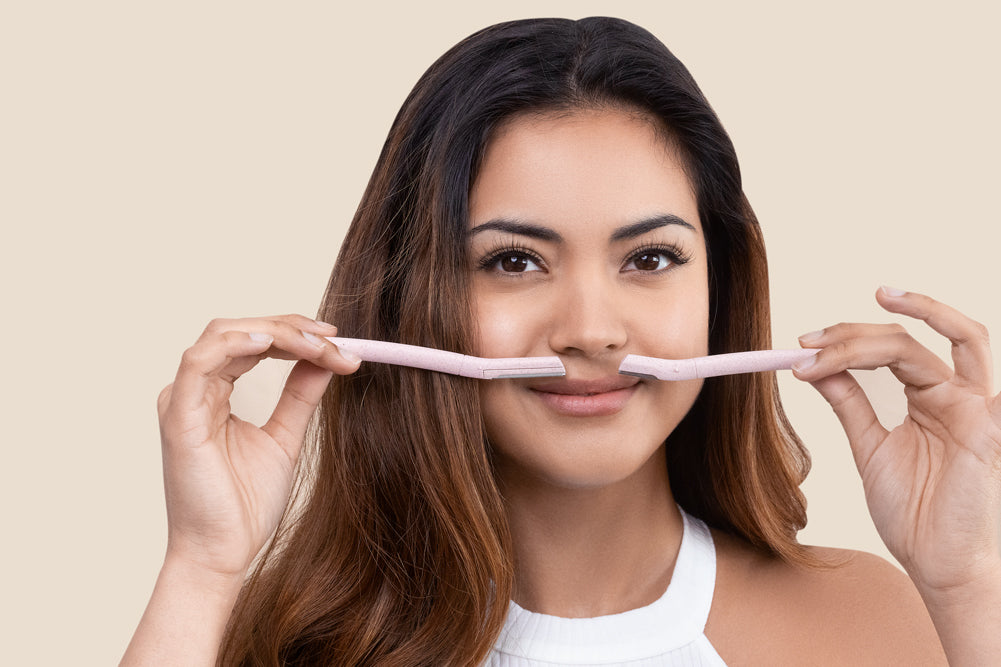
What is Dermaplaning and why should you do it?
Have you ever heard of dermaplaning? It’s one of the latest skincare trends, and even though it might sound scary at first, it’s highly beneficial. Dermaplaning helps with exfoliating the skin as well as removing that annoying facial hair or peach fuzz. Shaving my face you say, well won’t that make my hair grow back thicker? Is it safe? Let's investigate exactly what dermaplaning is and how to fully understand the science behind this new skin ritual.
What is dermaplaning?
Dermaplaning is an act of gently ‘shaving’ your face with a single bladed razor to remove the peach fuzz and dead skin cells from the top layer of the skin. It’s not shaving in the traditional sense, it's more like intense exfoliation and gentle hair removal. It has a multitude of benefits from giving you a more radiant complexion to increasing collagen production.
Can dermaplaning cause more hair growth?
Shaving your face might sound quite scary, however let's get one thing straight: You will not grow a beard nor thicker hair! This is one of the most common misconceptions when it comes to dermaplaning. However, women’s facial hair is called peach fuzz and it is soft and translucent and there is no way dermaplaning will impact the growth or colour of women’s facial hair. This is because we have two different types of hair - vellus and terminal hair. You will not change the structure of the vellus hair follicle by dermaplaning and realistically, only hormones can affect the growth or thickness of women’s facial hair. Thicker hair growth is a myth we truly need to debunk!
Is dermaplaning safe at home?
Dermaplaning used to be originally an in clinic procedure done by specialists. However, it’s now been adapted to be performed safely at home as well. Dermatologists will use a surgical scalpel and apply steady pressure to perform this exfoliating treatment while removing the top layer of dead skin cells and peach fuzz. “The devices that have been introduced for at-home use are more razor-like than the surgical blades,” says dermatologist and founder of Dr. Loretta Skincare.
This means that you can perform dermaplaning at home at a more surface-level which can be safely performed in the comfort of your own home. Professional dermaplaning can only be done once per month, however the benefits of dermaplaning at home can be easily gained every single week as it is safe.
Is Dermaplaning Painful?
Remember that dermaplaning should never ever be painful, in case it is, make sure to apply less pressure - or try oilplaning (dermaplaning with use of a little bit of oil beforehand) which can make the blades glide easier on the skin.

Dermaplaning before and after care
The benefits of dermaplaning including less texture, exfoliation benefits and smoother makeup application also mean that you need to take care of your skin before and after dermaplaning as well.
Before dermaplaning
Make sure you clean your skin before dermaplaning and remove all impurities and makeup for the most effective treatment. Excess oil and impurities on the skin can cause breakouts if you dermaplane as your skin will be more sensitive. Hence making sure your skin is squeaky clean is a must!
Dermaplaning aftercare
“Dermaplaning lessens the skin barrier,” says dr Ciraldo. “This means your products will penetrate more effectively, but it also means skin can become drier since there is less barrier to prevent water loss.” This means that afterwards your skin will need to retain its moisture and you will need to rehydrate it back to its normal balance. Pick moisturising serums and ingredients, such as Squalane oil which is highly nourishing and hydrating.
Another important product to mention when it comes to dermaplaning aftercare is SPF. As after every single exfoliation treatment, make sure to protect your skin by applying SPF on. Go for a higher SPF of 30 or 50 in case it’s a sunny day.
Dry Dermaplaning vs Oilplaning
Dermaplaning refers to the dry use of a dermaplaning razor on the top layer of the skin in order to reveal brighter, smoother and hairless complexion. This is often done using featherlight strokes holding the skin taut.
Oilplaning on the other hand, is essentially dermaplaning with the use of a facial oil beforehand for an easier glide and gentler exfoliation and facial hair removal. You should use a light oil that will not clog your pores such as squalane oil.
IS DERMAPLANING OR OILPLANNING BETTER FOR YOU?
Which one to choose and how do you choose? This is best decided based on your skin type!
- Dry Skin: Dermaplaning + use the oil after
- Sensitive Skin: Oilplaning for no irritation guaranteed!
- Mature Skin: Oiplaning
- Acne prone skin: Dermaplaning + use oil to hydrate after, avoid acne affected areas
Read more on deciding on if dermaplaning vs oilplaning is better for you here.
Dermaplaning for dry, oily, and sensitive skin.
Dermaplaning is suitable for all skin types, however you should consider the products you’re going to use while shaving your face as well as the frequency in which you’ll do the facial. There are different benefits that you can achieve by dermaplaning, every skin type can experience different effects of facial hair removal and exfoliation.
DERMAPLANING FOR DRY SKIN
First things first, why is dermaplaning beneficial for you in case you have dry skin?
- dermaplaning can be a great way to exfoliate those dead skin cells that might be trapped at the surface of your skin
- Shaving your face will get rid of the texture, making your skin appear smoother
- If you remove the dead skin cells/ dry flaky skin and facial hair and peach fuzz your makeup will apply more seamlessly
- Your hydrating products will penetrate deeper into your skin after the dermaplaning facial, and therefore they’ll work their magic faster
However, dermaplaning could make your skin feel more sensitive especially if it’s really dry. Make sure you rehydrate your skin after the treatment.
DERMAPLANING FOR OILY SKIN
In case you have an oily skin type, dermaplaning is a match made in heaven for you!
- When it comes to oily skin types it’s important to exfoliate the skin regularly in order to avoid breakouts, blackheads or clogged pores
- Dermaplaning is known for removing facial hair and peach fuzz which can often trap the dirt, excess oil and bacteria which can clog the pores, so it’s beneficial to remove them
DERMAPLANING FOR ACNE PRONE SKIN
In case you suffer from acne or have a breakout prone skin, dermaplaning might help
- Exfoliation can help to reduce pores, acne and even fade acne scars
- Dermaplaning encourages skin cell turnover and therefore it might fade your dark spots and scars if performed regularly
- Shaving your facial hair will help with the dirt, makeup and bacteria that might be stuck on them and therefore it can prevent the cause of pimples
- Dermaplaning generally helps with texture and makes your skin appear smoother and brighter
However, in case you suffer from serious acne get advice from your dermatologists before doing dermaplaning as it can irritate the skin. Also, if you have any active breakouts, avoid them while dermaplaning to prevent irritation. Make sure there are no comedogenic oils in your skincare or silicones that could further clog your pores which is often the cause of breakouts.
Squalane oil is non comedogenic yet highly nourishing and hydrating.
DERMAPLANING FOR SENSITIVE SKIN
In case your skin is sensitive, dermaplaning-at-home is a non-invasive facial which can improve your complexion if done right.
- Dermaplaning boosts collagen production making your skin firmer and brighter
In case your skin is sensitive be sure to not perform dermaplaning more than once a month. You should definitely consider oilplaning, the use of oil while performing this facial will prevent any irritation. Hydrate and nourish the skin afterwards. Make sure to avoid any active ingredients and always wear spf after the treatment, especially if your skin is on the sensitive side.
How often should you dermaplane?
Dermaplaning at home is different to dermaplaning done professionally. While in-office treatments should only be performed maximum once per month, dermaplaning at home can be done every single week if desired according to the dermatologists (Gohara and Ciraldo.) There’s weekly, daily and monthly recommended facial care to give you a radiant complexion.

Can dermaplaning help with or cause acne?
Does dermaplaning cause acne or can it actually help with acne or even prevent the spots?
By removing the top layer of the skin, dermaplaning can drastically improve and remove the acne scars by getting rid of the discoloration as well as the uneven texture that is associated with scar tissue. Uneven texture of the skin is often caused by the dead skin cells or facial hair on the surface of the scar tissue and by removing these you’ll be able to get rid of the acne scars over time. Additionally, dermaplaning also boosts collagen production of the skin which will also help to make your skin smoother and firmer.
Can dermaplaning help rosacea?
Rosacea is a long-term skin condition that mainly affects the face. Its symptoms include blushing or flushing (facial redness, and visible blood vessels on the face as well as thickened skin. Additionally, it can also form small pus filled bumps predominantly located on the centre of the face.
Dermaplaning can be done to reduce the rosacea as it involves gentle exfoliation of skin. The dermaplaning treatment is done by gently scraping off the top layer of that skin cells and peach fuzz which can visibly reduce the rosacea symptoms. Dermaplaning not only removes the facial hair, it also triggers the cell regenerative process and boosts collagen production which makes the skin smoother and firmer.
Don’t do it if you have active or severe rosacea.
Dermaplaning when pregnant?
When you're pregnant, there are certain active ingredients that you cannot use and should exclude from your skincare routine.These include benzoyl peroxide, salicylic acid, retinoids and ahas; so basically most of the ingredients that are used for skin exfoliation. How can you then safely exfoliate your skin while pregnant?
Dermaplaning is the safest way of exfoliation in case you are expecting. It’s a simple physical exfoliation which does not include any chemicals or other ingredients that are not safe to use during pregnancy. Dermaplaning at home is the best way to keep your skin exfoliated and get your glow on while pregnant.
You probably know that while being pregnant your skin can go a little crazy and you may find yourself experiencing hair growth due to hormonal changes. Therefore, having a set skincare routine can help you maintain clear glowing skin during those 9 months.
Will dermaplaning remove your tan?
While some exfoliating facial treatments, like for example chemical peels, can affect your skin pigment, dermaplaning won’t affect nor remove your tan. Even though it is a type of exfoliating facial treatment, it only penetrated 0.5mm into the epidermis, which is the top layer of the skin. To explain, chemical peels often penetrate 2mm into the epidermis.
Dermaplaning provides just as deep exfoliation however it won’t remove the tan.
Does dermaplaning help with blackheads?
Dermaplaning is one of the greatest ways of exfoliation; it can help you to achieve smooth hairless and brighter younger looking complexion - and it can reduce your blackheads. As exfoliation overall helps with exfoliating the dead skin cells on the top layer of your skin as well as clogged pores, it can heavily reduce breakouts. Therefore, dermaplaning can really help if you struggle with clogged pores or blackheads.
Dermaplaning vs alternatives
There have traditionally been multiple ways to remove hair from the face including more traditional facial hair removal creams (that contain harsh chemicals), waxing (that pulls the top layer of the skin) as well as more modern salon treatments like lazer (that is costly and time consuming). Dermaplaning stacks top on time, ease and cost when compared to alternative methods as well as most importantly being the best way to protect your skin barrier.

Dermaplaning Vs Microdermabrasion. What’s the difference?
The main purpose of dermaplaning is getting rid of facial hair, peach fuzz and texture while exfoliating the dead skin cells with a single bladed razor. Microdermabrasion on the other hand is a cosmetic procedure that uses fine crystals and vacuum to remove the dead skin cells. Microdermabrasion is much more efficient when performed in the office by dermatologists as they have professional devices and there isn’t a similar quality result that can be achieved at home. In case you’d like to get rid of dead skin cells you can easily exfoliate by dermaplaning.
Dermaplaning Vs Threading
Threading is another method for removing vellus hair from the face. With threading your removing the entire hair from the root. Threading does this by picking up and traps several hairs at a time. They then pull the hair straight out of the follicle.The issue with threading similar to waxing is that is can cause redness and irritation to the skin and is not recommended for sensitive skin. Threading has also been known to cause breakouts in the short to medium term.
Can men try dermaplaning?
Dermaplaning can easily be a men's alternative way to facial hair grooming, as it's a perfect non-invasive easy way to maintain that clean lines in-between appointments! It generally takes seconds, and it's a proven method of shaving which can save men the constant pressure of visiting the barber to have their beard groomed. Furthermore, men can also benefit from the exfoliating and collagen boosting benefits of dermaplaning. You can read more about men’s dermaplaning here.
Dermaplaning vs Dermablading
Both dermaplaning and dermablading are essentially the same thing, these names are just used interchangeably. Dermablading isn’t just a technique for dead skin and peach fuzz removal, it can also be used to shape your eyebrows for a more polished look.
The benefits of trying dermaplaning
Dermaplaning is a quick and easy but high impact way to exfoliate and reveal a radiant complexion. It’s also safer and more gentle on the skin compared to traditional hair removal methods like waxing and threading. In summary dermaplaning can save your skin as well as your pocket as it’s lower cost per use than almost any other alternative. It provides:
- Safe and gentle exfoliation of dead skin cells and facial hair “peach fuzz”.
- You’ll be left with a clean smooth complexion for seamless makeup application.
- Your skin will appear brighter - as you get rid of a top layer of dead skin you’ll get rid of dull skin and will be left with glowing complexion.
- Your skincare products will penetrate deeper.
By taking off the top layer of dead skin cells and peach fuzz your skin will become silky soft and you’ll have much brighter and smoother complexion. Your makeup will apply like a dream afterwards- smoothly and seamlessly. Additionally, as dermaplaning is an amazing form of exfoliation, it’ll help your skincare products penetrate deeper into your skin.
The process is painless and the results are so worth it! You’ll be shocked by how much dirt, hair and dead skin cells will come off your face.
What do you need for dermaplaning at home:
To try this progressive treatment at home you need to prepare your skin, equip yourself with some dermaplaning razors and ideally invest in a dermplaning oil for your skin barrier. Other than this, the technique required for the simple home procedure can be easily learnt and mastered in no time at all.
You can read more on how to dermaplane at home here.
Best Dermaplaning Tools
If you decide to do this game changing skin treatment at home, you’ll need a cleanser, our dermaplaning tools, and a hydrating serum or oil to apply afterwards. (All come together in our Take it off starter kit) which is the best way to get started with your dermaplaning journey!



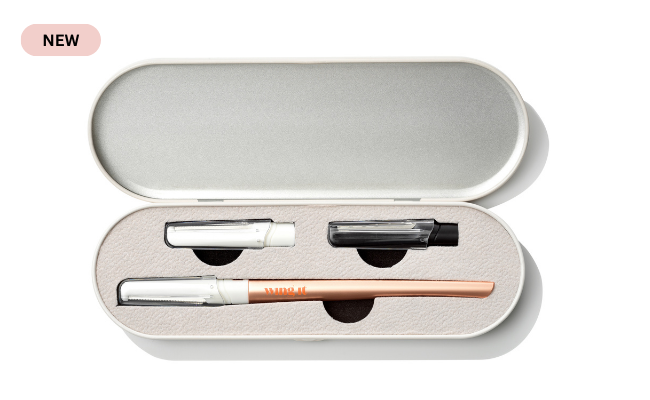
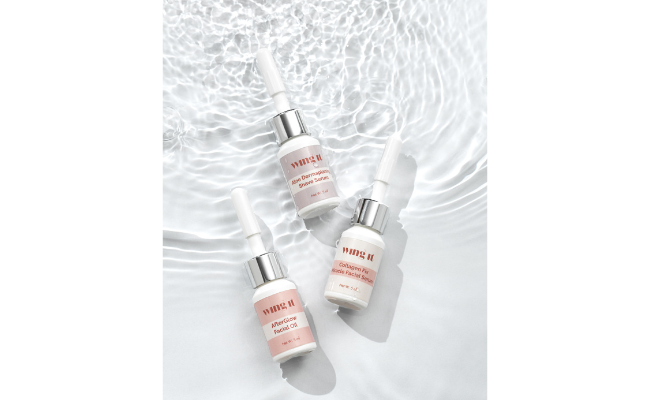
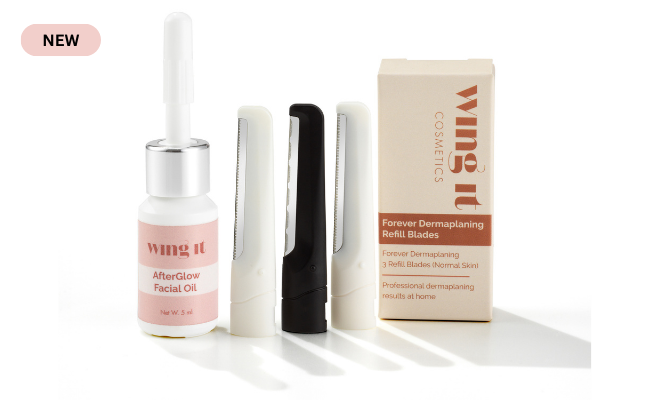
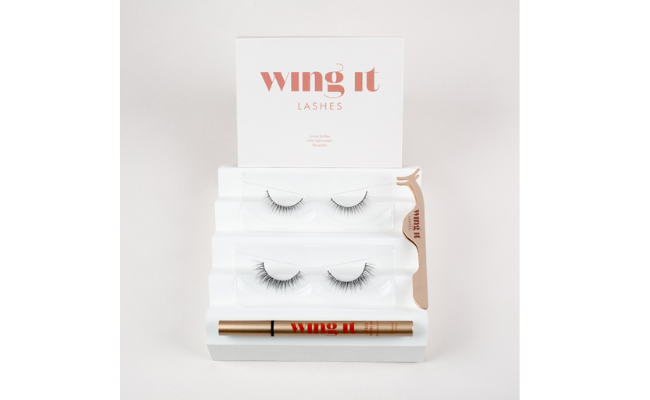
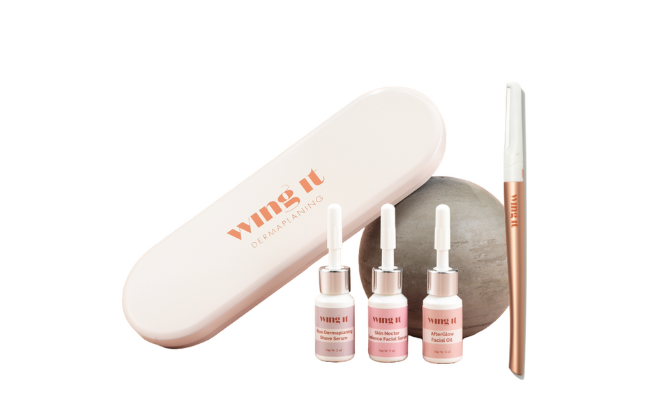

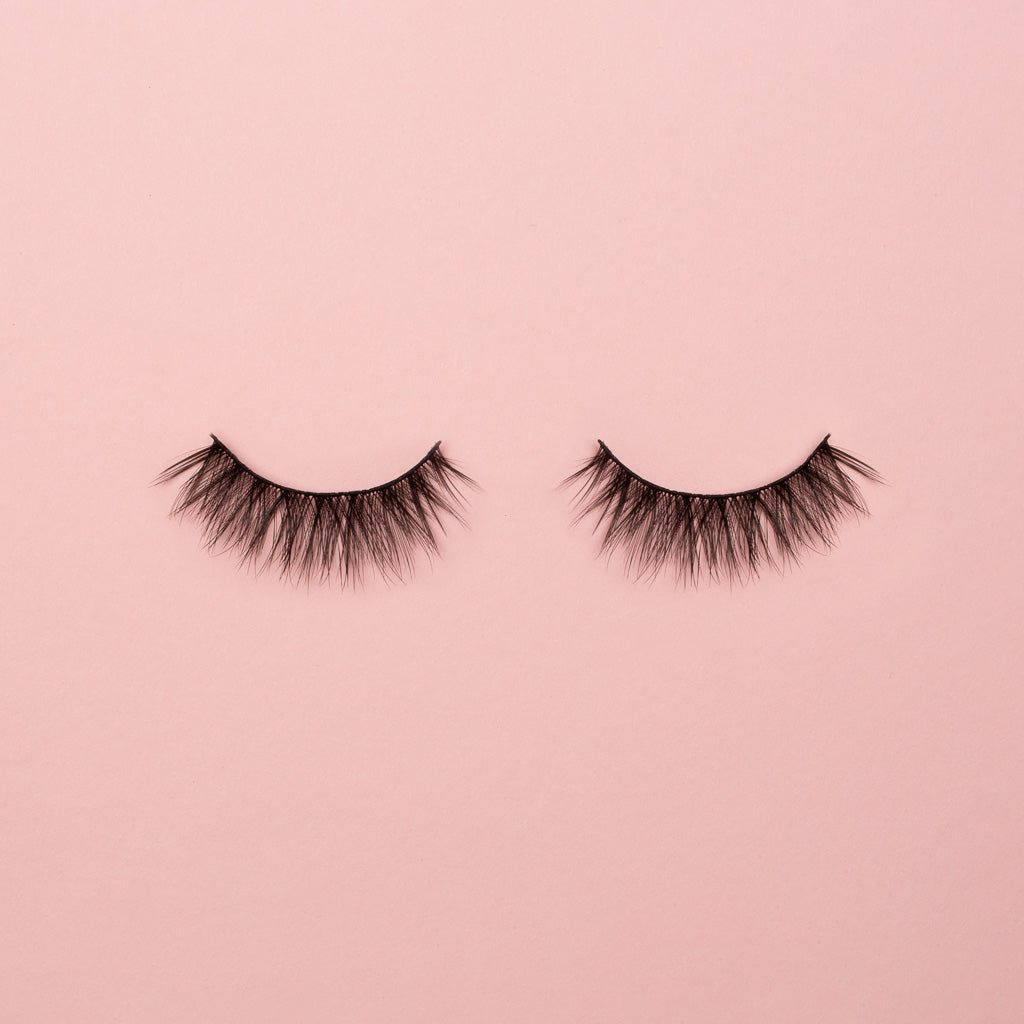
6 comments
Words weave tales, puzzles tease, minds explore. Word games: endless fun, knowledge, connection, excitement! https://playwordgames.org
Alisha
Step into the whimsical world of Monkey Mart! Manage a lively store, serve amusing customers, and tackle fun-filled puzzles for endless entertainment and rewards https://quillfulgames.com/monkey-mart
Ash
Phrazle is an interactive word game that boosts language skills and offers enjoyable brain-teasing challenges for players. https://phrazle.website
jack
In the information above it says “In case your skin is sensitive be sure to not perform dermaplaning more than once a month. You should definitely consider oilplaning, the use of oil while performing this facial will prevent any irritation.” Does this mean you can perform oilplaning more often than once a month with sensitive skin?
Judy
Hi . I have purchased the starter kit and I think its great ! How many times can you use the blade before it needs to be replaced ?
Cheryl
Mary
Leave a comment
This site is protected by hCaptcha and the hCaptcha Privacy Policy and Terms of Service apply.